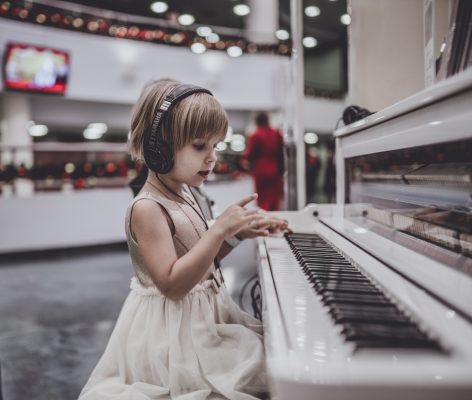Music education has shifted in the past year due to the COVID-19 pandemic and the advent of new technology. While technology cannot take the place of music, it provides educators with a better way to teach their students. Take a look at how technology makes the classroom better (or worse.) You do not need to be a technology wiz to get the best results, but you should not simply dismiss technology out of hand.

Music education is changing, and we need to learn how to adapt to those changes wisely.
5G – A Boon To Music Education
5G phones are fantastic, and 5G also provides you with the speeds you need to host virtual rehearsals. Because of the pandemic, it is important to find ways to reach out to students. A virtual rehearsal makes a big difference for a band, orchestra, or choir director who teaches ensembles and is used to having everyone in one room.
Virtual lessons are perfect for private students who want to advance their studies. 5G also helps improve the overall transmission of anything that happens in a rehearsal. Go back in time and have a virtual rehearsal with slower technology. You have a rehearsal, but it does not sound as good.
Yes, we know that you cannot truly judge what is going on virtually because you are not hearing the sound in the same room as the performer, but this is better than nothing. 5G technology is remarkable, and you get a better sense of what is going on. Don’t have 5G? It’s worth the upgrade.
Collaborative pianists can hold rehearsals with instrumentalists, jazz musicians can learn sets so they can hit the ground running once clubs open up again, and teachers can offer piano lessons without dealing with lags and poor quality.
Students Must Be Independent
This is an unpopular opinion, but it needs to be said—a lot of music teachers do not allow their students to be independent. The students are told what to do ALL THE TIME, and they never have time for independent thought. These students might be good and the group performs well, but there is nothing unique about what the kids are doing.
They even come off sounding like a computer. It’s clean—but it has no character.
Now that you are forced to use technology, the students need to be more independent. Allow them to be independent. Ask for more unique sounds. That kid with the odd voice that sounds like it’s in a cavern should be allowed to grow into that voice. That one kid in the saxophone section who has a private teacher with a Buescher/Rascher setup and a little French vibrato should be allowed to be THAT kid.
You have no choice but to ask the kids to be independent. Let it happen. Think of how much better the group will get (and how much faster it will happen) if you set everyone free.
Small Ensembles Are More Important Than Ever
While most band, orchestra, or choir directors want their students to perform in small ensembles, it is difficult to find time to do so. Starting a small ensemble program can take a lot of time, and organizing those ensembles can be even harder than scheduling rehearsals or classes. Now that kids are sitting at home, they should be encouraged to start small ensembles because they can do that easily and safely.
You can recommend the music, and the kids can host their own rehearsals. You know your students are much better with technology, and they often live near each other. These kids can host socially-distanced rehearsals, and they can build up your group for you.
You Can Utilize Customized Technology
Smart Music™ is one of the most popular pieces of technology in use in classrooms around America. For the most part, this program allows teachers to send out assignments, students play those assignments into a microphone, and the assignment is sent back to the teacher. This program even grades kids because it can detect the notes the students are playing.
Programs like this make life easier for students and directors. They are easy to use, and kids can do a lot of work at home. This is especially helpful when learning how to play piano chords, arpeggios, and practicing scales. It’s a big win for students, and it really helps teachers.
Just One Drawback—No Live Performance
The only drawback of the pandemic and using so much technology is that you lose the element of live performance. Now, I am not saying that you should go down the line like Toscanini, “Play, you’re fired. Play, you’re fired.” At the same time, it helps to be able to say, “third clarinets, can we start at measure 70?” and they play it. The kids need to know ALL their music and they need to build up a little nerve so they can perform live.
Just remember that you always want to go back to live performance. You can utilize a lot of technology and do a lot of good. While the pandemic has been awful, take this opportunity to utilize technology and improve your ensembles. You can even sign up for virtual piano lessons, instrumental lessons, and more.
Interesting Related Article: “Top 10 Best Music Streaming Apps in the Global Music Streaming Service Market 2019“

